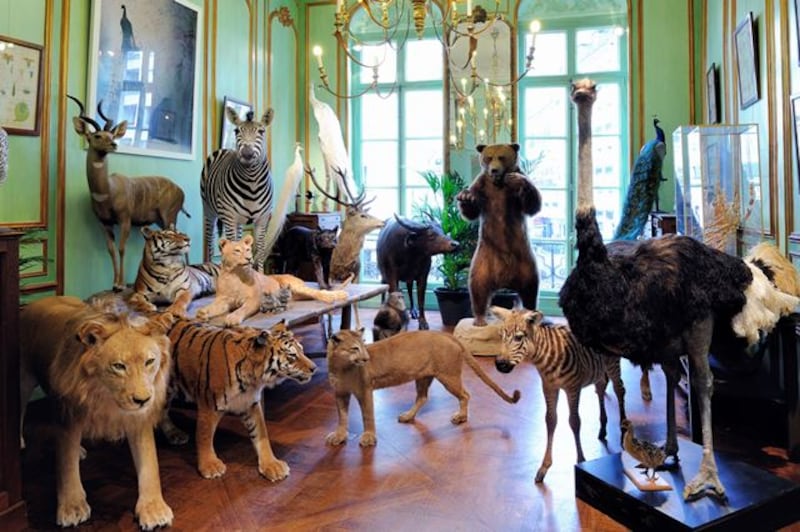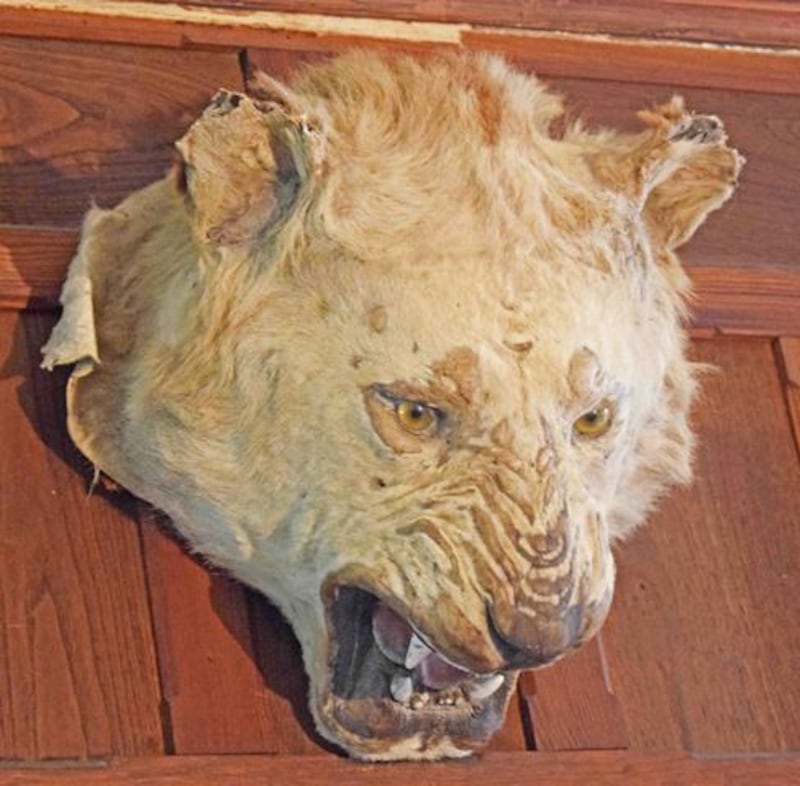Tables throughout Ireland are now well rid of plump turkeys for another year, but stuffed birds – and other creatures – of a very different kind are among the most sought after items in antiques auctions as taxidermy enjoys an unexpected revival.
Taxidermy has proved remarkably resilient despite its demise being long since foretold. In August 1951, The Irish Times reported that "taxidermy is becoming a lost art", and lamented that "the art of taxidermy – the mounting, stuffing, dressing and ornamenting of dead birds, fish and animals – is virtually a lost one in Dublin and, unless there is a sudden upsurge of enthusiasm among young men, it is likely to die out".
While the practice itself has, indeed, declined, antique taxidermy is enjoying a remarkable revival, and is keenly sought after by a new generation of collectors.
Taxidermy was very popular during the 19th and early 20th centuries, and even taken up as a hobby by “amateurs”, including hunters and anglers.
In September 1904, The Irish Times reminded readers that they could buy "a useful shilling handbook on taxidermy from Ponsonby, 116 Grafton Street, Dublin, or from Eason and Son, Middle Abbey Street, Dublin", while pointing out that the otter-hunting season was "nearly over now".
Hard to believe now, in an era of wildlife pretention and awareness, that otters were hunted – never mind used for taxidermy – until as recently as the 1970s by special dogs known as otterhounds.
Hummingbirds
During the Victorian and Edwardian eras there was a taxidermist in most major cities and towns, and glass-cased displays of taxidermy were routinely found in homes throughout Britain and Ireland. Virtually every known creature could – and did – end up stuffed, from a salmon destined to be cased in glass and hung on the wall of the angler’s local pub to elaborate displays of hummingbirds in middle-class drawing rooms.
The most elaborate examples were big game specimens brought back as trophies from hunting trips to colonial Africa and India. Memoirs of “big house” life often feature taxidermy.

A typical – and fascinating – example is this recollection by the late Margaret Rhodes (a cousin of, and lady-in-waiting to, Queen Elizabeth II) of her early 20th century childhood in a country house in Scotland.
“I grew up with a stuffed eight-foot high grizzly standing on its hind legs in the hall at Carberry, and I still have my father’s game book showing that, during just three visits to the foothills of the Himalayas in 1895 and 1896, he bagged 13 tigers, three leopards, 21 rhino, 39 buffalo, 10 bison, three python, and many deer, pig, quail and peacock.”
Taxidermy declined in popularity from the mid-20th century, and a vast quantity was sold off in house clearance auctions. Some collections were de-accessioned by museums. But the wheel of fashion has turned, tastes have changed and taxidermy has – most unexpectedly – become very collectible again in the 21st century.
Wild imaginations
For collectors with deep pockets and wild imaginations, most taxidermy whims can be satisfied at specialist shops like Maison Deyrolle in Paris, a house on the Rue du Bac that is part shop, part museum with a surreal display of birds and animals.
Taxidermy regularly turns up in many Irish and English salerooms. Among numerous lots sold in Ireland last year, the best example was a glass case of 19th century taxidermy by H Ward, 2 Vere St, Oxford St, London, that included pheasants, partridges and various exotic birds, that once adorned Cabra Castle in Co Cavan, and was owned by the late Eileen, Countess of Mount Charles. It was offered in the Adam’s Country House Collections auction in Townley Hall in November, and sold for €4,200 – way above the estimate (just €500-€1,000).
The previous year an Indian tiger’s head “with glass eyes, above a snarling mouth” which had been in the collection of Sir Anthony O’Reilly, sold for €1,000 – double its low estimate at Mealy’s.

Among the more extraordinary examples sold at Christie’s in London were a late Victorian period “taxidermy chihuahua” that made £20,000 and an Edwardian period “taxidermy giraffe head-and-shoulders” that made £17,500.
Condition
Bidders for taxidermy at auction should be aware that condition is paramount – buy the best quality possible. Remember that taxidermy can deteriorate due to moth and other insect infestation and may require repair work.
If the piece was originally cased (particularly under domed glass) make sure that the case is the original. Pieces by named, famous taxidermists (with the label) are the most valuable.
Collectors in Ireland are especially interested in pieces created by the most famous Irish taxidermist, Williams & Son of 2 Dame Street, Dublin, which closed down during the second World War. The company had a world-wide clientele during its Victorian and Edwardian heydays. Superb examples of work by Williams & Son – including cased displays of seals and otters – can be been in the thrillingly unmodernised National Museum of Ireland's Natural History wing in Merrion Street, Dublin (affectionately known as the "Dead Zoo") which has one of the world's best collections of taxidermy and is well worth visiting.
Among the big British firms, names to look out for include Rowland Ward Ltd of Piccadilly – a London company renowned for its work on big game trophies; James Hutchings of Aberystwyth; James Gardner, London; Thomas Gunn, Norwich; A.S Hutchinson, Derby; Jefferies & Sons, Carmarthen; Murray of Carnforth; H.T. Shopland, Torquay; and, Peter Spicer, Leamington Spa.
Made in India
Many pieces of taxidermy were made in India during the British Raj by a famous firm – founded by Dutch migrants – Van Ingen & Van Ingen of Mysore, and shipped back to Britain and Ireland. Tiger skins bearing their label are particularly collectible.
For aficionados there are even niche collecting categories, most notably the truly bizarre “anthropomorphic taxidermy” – a Victorian whimsy that involved creating cased tableaux in which the animals are presented dressed as people and engaged in human activities such as, for example, squirrels posing as boxers or rabbits presented as schoolchildren.
Taxidermy attracts all sorts of buyers from the owners of country house hotels to interior decorators looking for pieces to create a “wow” factor for clients.
Well-known admirers have included the artist Lucian Freud who, in a letter to a friend, wrote: “I have bought a very large zebra’s head. It looks very strange on the wall with big glass eyes and mane going up. By far the best thing I have ever bought.”











